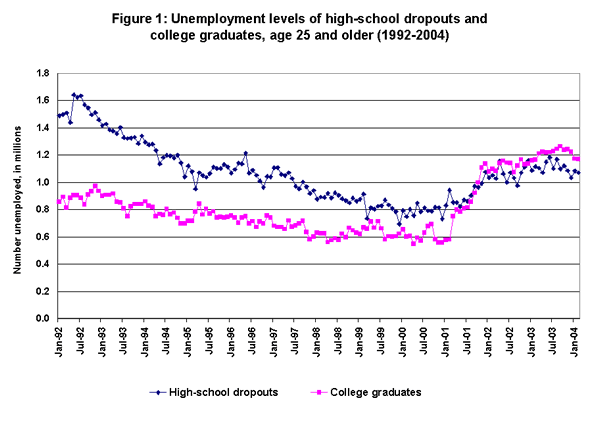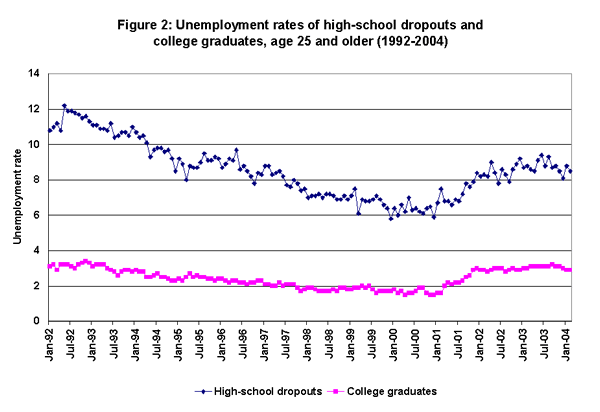See Snapshots Archive.
Snapshot for March 17, 2004.
Unemployment level of college grads surpasses that of high-school dropouts
The recent job market has been particularly tough for those workers with college degrees. In fact, as Figure 1 reveals, the number of unemployed college graduates surpassed that of high-school dropouts a few months ago (all data are for persons 25 years and older). From its low point of about 600,000 at the end of 2000, the number of unemployed college grads doubled across the recession of 2001 and the weak jobs recovery that followed. Unemployment also rose, of course, among those adults with less than a high-school degree, but by a far smaller percentage (about 60%).

There are, however, far more college graduates than high-school dropouts in our current labor force. Last month, for example, there were 12.5 million high-school dropouts in the labor force, compared to 39.9 million college grads. Thus, as shown in Figure 2, the unemployment rate for those with a college degree—i.e., the number unemployed divided by the number in the labor force—is much lower than the unemployment rate for high-school dropouts. Nevertheless, even in Figure 2 the sharp and sustained rise in the rate of unemployment among college grads is evident.

Such a large and enduring increase in unemployment among those with college degrees is unusual, even in a recession. One reason for the increase is the lasting impact of the bursting bubble in the information technology and financial services sectors. This cyclical effect will ultimately fade as demand returns in these industries and absorbs excess capacity built up over the last boom. But a new structural problem—the offshoring of white-collar jobs in services—may also help explain the fact that unemployment in this recession and weak jobs recovery has crept so far up the education ladder.
Source: Author’s analysis of Bureau of Labor Statistics data.
This Snapshot was written by EPI economist Jared Bernstein with research assistance by Yulia Fungard.
